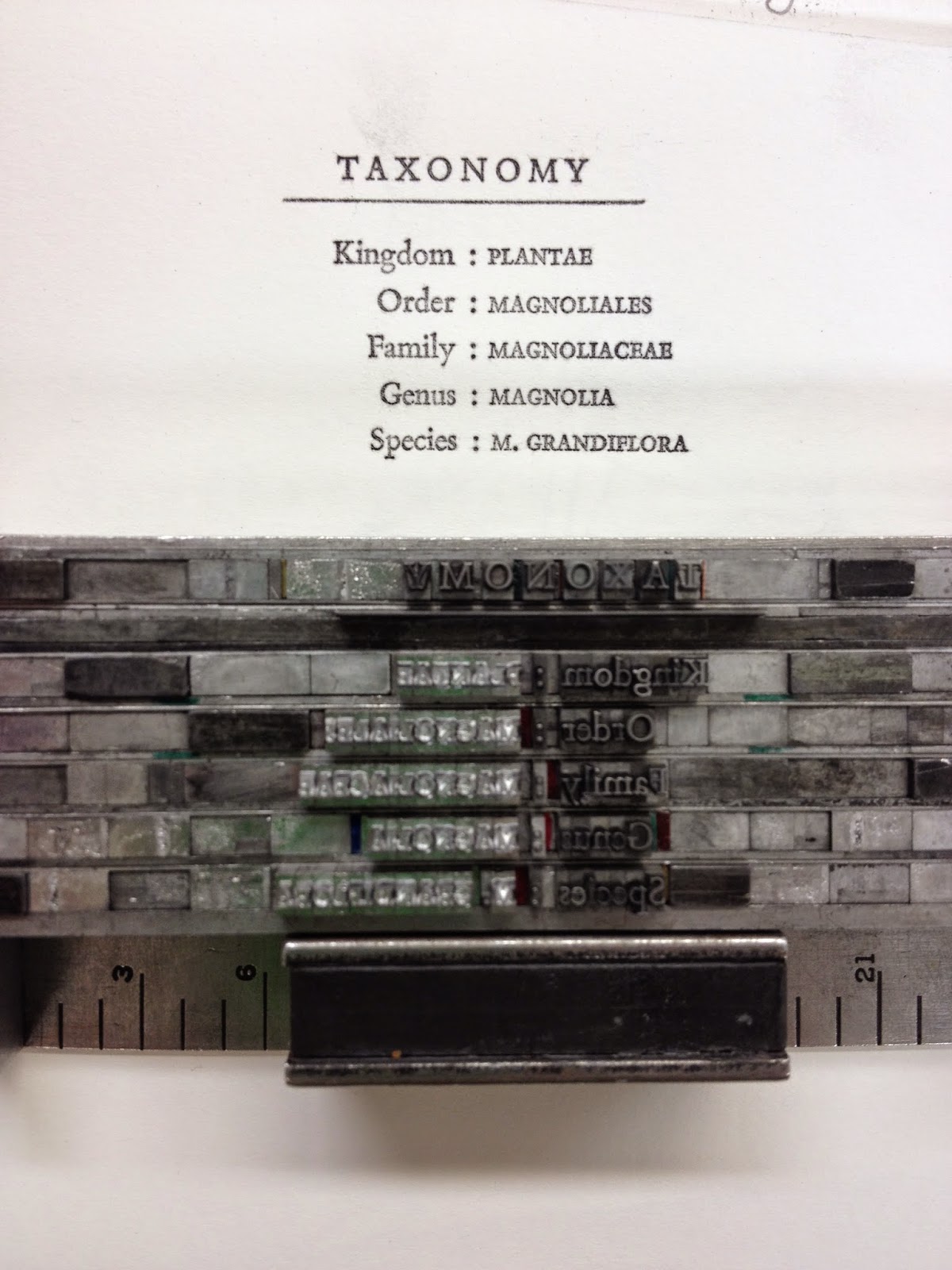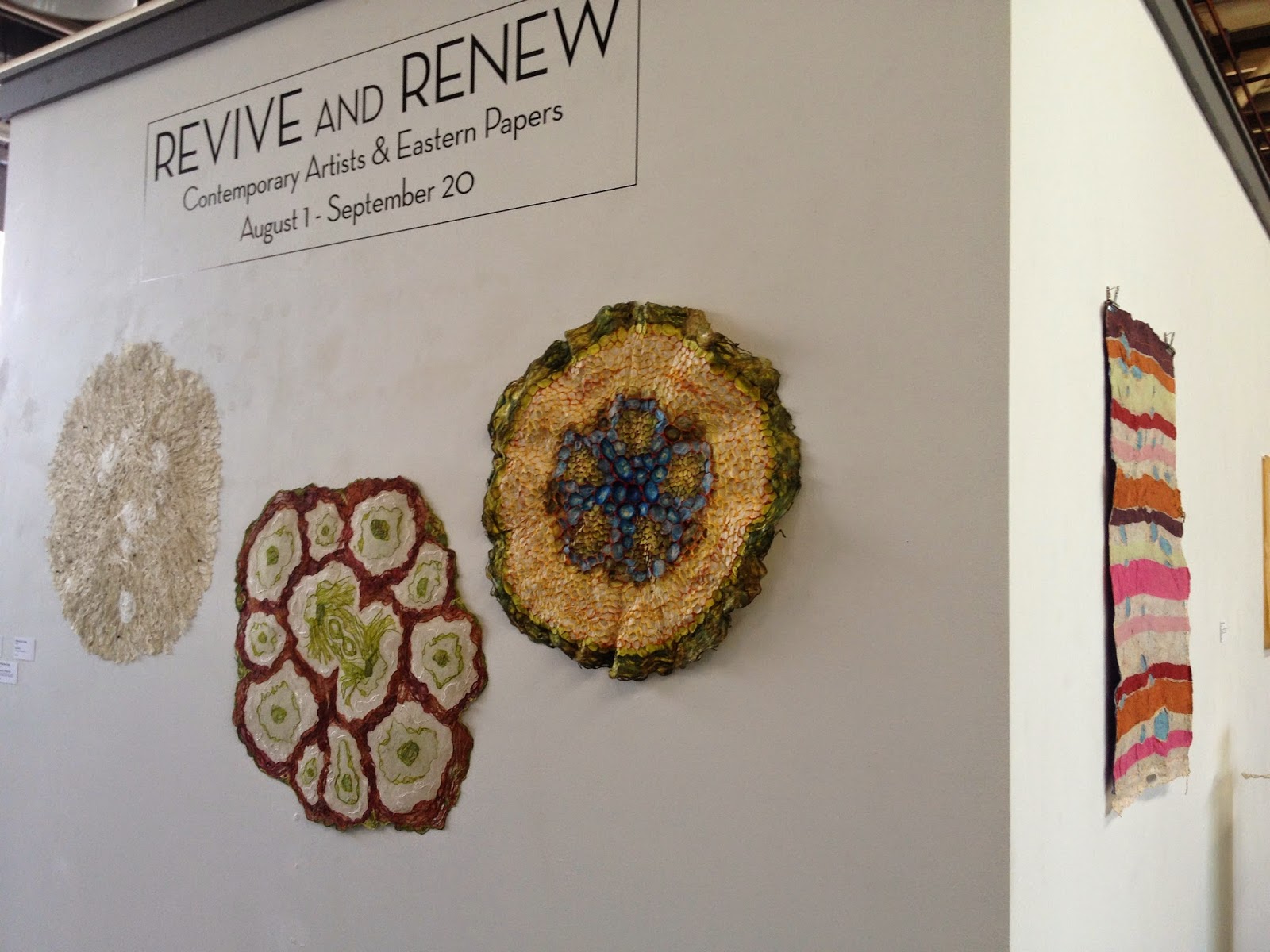Our proposal for a submission for the Hand Papermaking portfolio themed Negative Space was accepted last year. We were excited first, and then overwhelmed by the amount of work that was involved in creating 152 pieces needed for the portfolio. The great thing about participating in the Portfolio is that we each get one at the end! Anne Covell, Steph Rue and I worked together on this laborious project. The idea was to embed silk threads in between two sheets of abaca. The threads varied in colour, and went from dark brown all the way to the colour of the paper. They seemed to melt into the sheet and become invisible. The plan was to lay them out in a grid 1/4" apart from one another. In the middle, they would create a negative space as they melted into the sheet.
Threading completed - for one sheet
The frame was carefully lifted and transported to the wet area to be couched. Vyvek strips were laid down prior to placement. These would act as cutting surfaces for the threads

After pressing!
The test sheets were threaded using a gradation of blue silk threads.
We decided only to thread a portion of the frame and make a smaller sheet for the test
We decided only to thread a portion of the frame and make a smaller sheet for the test
The frame was laid face down and centered onto the sheet of paper. The threads that weren't completely taut, absorbed the water from the sheet first, and remained in the position they were in when the frame was first laid down. They couldn't be re-positioned afterward.
The
second sheet was then couched on top of the first carefully, and then pressed in a hydraulic press
The
sheet after pressing
The test worked, and was accepted as part of the proposal. Now it was time to begin
The
frame being threaded. We decided to make the sheets large enough to get eight out of a sheet. This way we needed to only make 30 or so sheets, accounting for wastage and mishaps
Threading completed - for one sheet
The
frame was laid face down and centered onto the sheet of paper. The
threads that weren't completely taut, absorbed the water from the sheet
first, and remained in the position they were in when the frame was
first laid down. They couldn't be re-positioned afterward.
The frame was carefully lifted and transported to the wet area to be couched. Vyvek strips were laid down prior to placement. These would act as cutting surfaces for the threads
The threads were carefully repositioned. Some that had already sunk to the surface of the sheet couldn't be recovered,
but the others often could
but the others often could
It took all three of us to lift and reposition so as not to disturb any other threads
Post-pressing. Placing the second sheet on top of it was a stressful challenge.

After pressing!
Ta Da! The finished sheet. It was hard to get the threads to stay in the grid despite our best efforts, but we did manage to finish the edition, and each individual piece looked pretty good! Being included in the portfolio along with all the other artists was quite an honour. I will be posting photos of the finished piece in the portfolio as soon as I have it in my possession.


























































